When it comes to leveraging keywords in SEO, there’s more to it than simply selecting words and plugging them into a webpage. Search engines are now more intuitive when it comes to understanding and ranking content on the web. Where previously the authority of a topic could be determined by how many times a keyword was used on a webpage, search engines now consider the context of a keyword (i.e., how the keyword is being used and for which purposes).
When we consider the context of a keyword, we are considering the keyword’s search intent, or user intent. Understanding keyword search intent is highly valuable when creating content for the website; by doing so, you can ensure you are creating content that is useful and relevant to your target audience’s needs.
What is Search Intent?
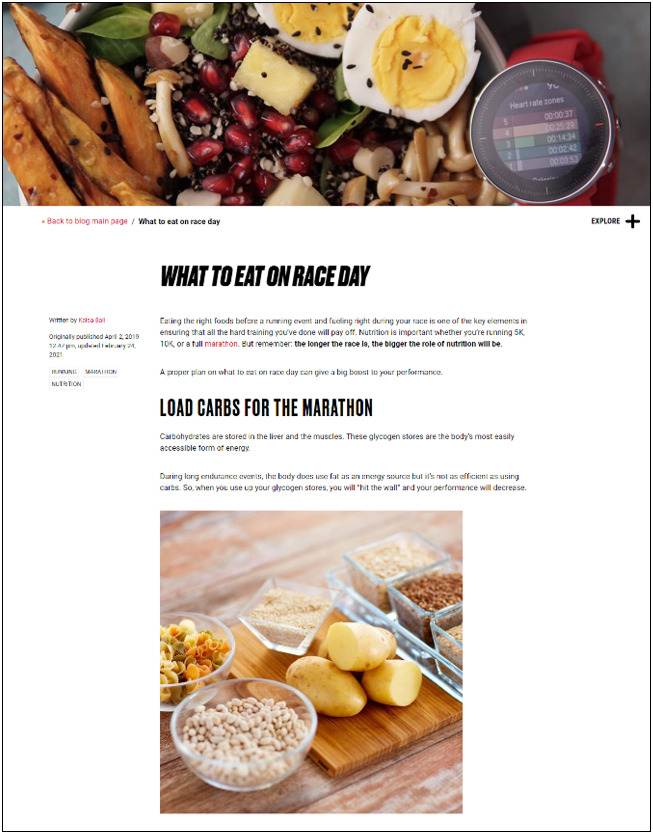 Search intent is the user or audience’s purpose of a specific online search. Keywords can carry different meanings (i.e., “race” as in “marathon race” vs. “ethnicity”), so search engines use search intent to understand and deliver results they think the audience is looking for. Again, search engines understand search intent because they address the context of a keyword, not just the definition itself.
Search intent is the user or audience’s purpose of a specific online search. Keywords can carry different meanings (i.e., “race” as in “marathon race” vs. “ethnicity”), so search engines use search intent to understand and deliver results they think the audience is looking for. Again, search engines understand search intent because they address the context of a keyword, not just the definition itself.
This context includes factors such as on-page headings (H1s, H2s), internal and external links, anchor text of links, images, and image alt text. These factors inform search engines on how a keyword is being used and defined.
For example, the webpage “What to Eat on Race Day” optimizes subheadings (H2s) to include terms such as “marathon”, “carbs” and “pre-race” to inform search engines of the context the keywords “race” and “race day”.
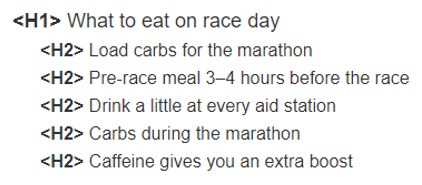
The page also includes an image of a marathon runner with alt text to describe the image with relevant terms (e.g., “energy drinks” + “carbs” + “race day”).
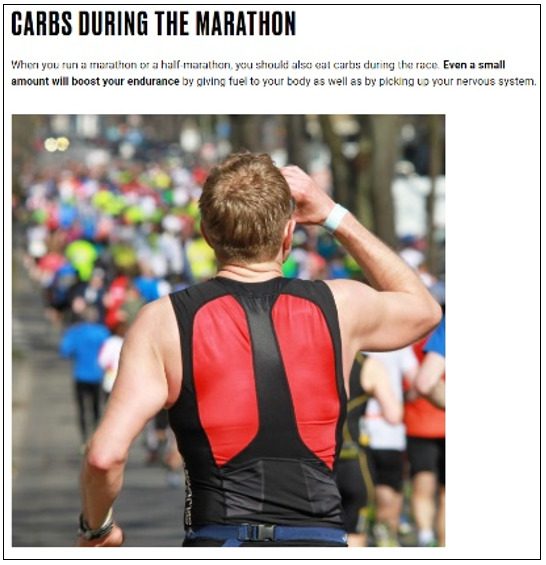

Pages that gain the most visibility and attract the most site visitors for a specific keyword in specific context begin to earn authority for that keyword (i.e., it is understood by search engines to be the most relevant and authoritative result for that keyword in that context), and will garner a top spot on the search engine results page.
The 4 Types of Search Intent
There are 4 common types of search intent:
1. Informational Search Intent: this is when a user is looking for information, such as definitions and explanations. The results for these search intents are usually How-To, What, and Why types of evergreen content (e.g., Wikipedia pages, blog posts, and instructional videos).
Examples: “what is tomato sauce?,” “types of beer,” “history of Spain”
2. Navigational Search Intent: users with this search intent want to go to a specific place, such as a site or a physical location, or even a specific spot on a webpage
Examples: “YouTube,” “Starbucks,” “compare electricity pricing”
3. Transactional Search Intent: this search intent signals someone who wants to complete a transaction of some kind. Usually, the user already has a specific idea in mind (branding, product, pricing, etc.) more than any other type of search intent and is ready to convert or make a purchase.
Examples: “water bottles,” “AAA batteries,” “Apple tablets”
4. Commercial Search Intent: this type of search intent is to investigate or research something with the aim of eventually completing a transaction of some kind. The difference between transactional search intent and commercial search intent is customer readiness. With transactional search intent, the customer is ready to transact now, as where with commercial search intent, the customer intends to transact at some point in the near future. This is also distinct from informational search intent, which usually aims to find evergreen content that doesn’t have a time limit or seasonality. Keywords with commercial search intent usually contain qualifiers such as “discount,” “deals,” “best,” or a date.
Examples: “deal on tires,” “wine discount,” “best washing machines 2022”
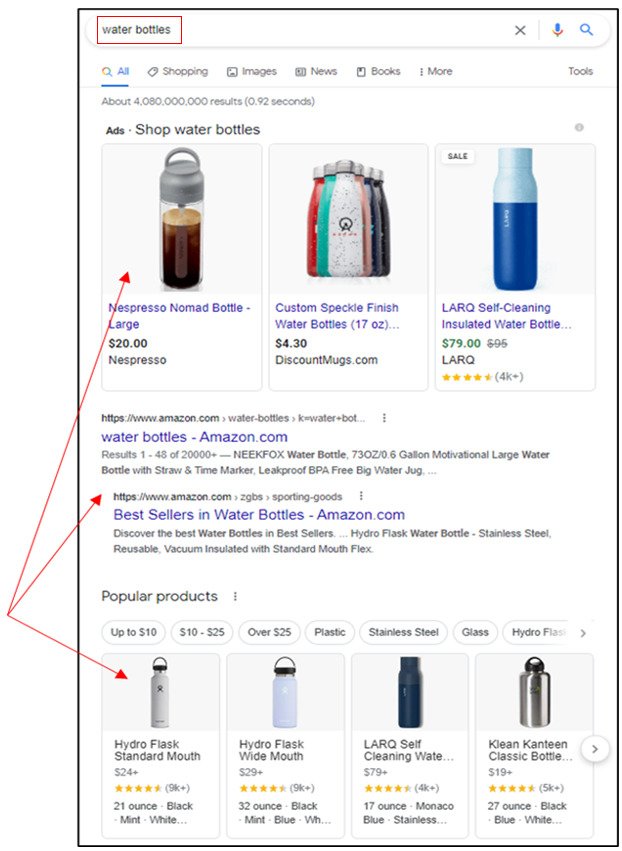
An Example of Search Intent
The keyword “water bottles” has transactional search intent, meaning when someone searches online for “water bottles” they are likely searching with the intent to purchase water bottles. Therefore, the best, most relevant, and authoritative search results for this keyword would be product pages on e-commerce sites, versus a Wikipedia page defining “water bottles.”
When thinking about content strategy, search intent can help determine the best content type and page outline for a topic. Taking intent into consideration helps ensure you are creating content that is relevant and useful to the target audience.
How to Determine a Keyword’s Search Intent
1. Analyze SERP Results for Your Primary Keyword
Once you have selected a topic to target, you may have also already selected a primary keyword to craft your content around (i.e., “water bottles,” “marathons,” “net zero”).
To begin analyzing the search intent of this primary keyword, you should start by searching for your keyword in a search engine to see the top SERP results. This will help you understand how search engines are interpreting the context of your content.
For example, let’s say you are interested in creating content for the primary keyword “net zero” in the context of how to invest in net zero stocks.
First, search for “net zero” to see the top organic search results for “net zero.”
Analyze the meta titles for how the topic “net zero” is being addressed (i.e., there is a lot of “what is,” “why,” or informational content).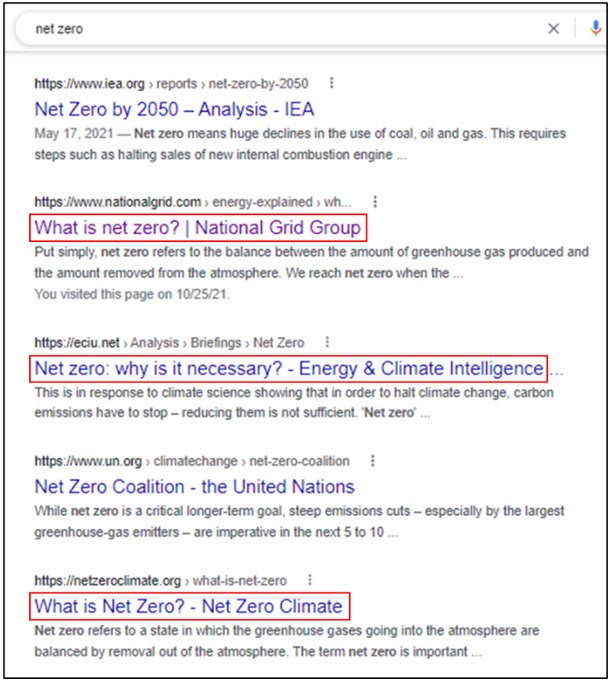
Analyze the sites and companies themselves to understand your top competitors for this topic (i.e., which sites or companies are ranking authoritatively for “net zero”).
It can be observed from the SERP results that “net zero” is dominated by energy companies and industries delivering informational “what is” or “why” content. This is slightly off mark for the content you want to create (i.e., how to invest in net zero stocks), but initial SERP analysis of your primary keyword helps you understand the type of search intent associated with your primary keyword, the preferred content type for this keyword or topic, and top-ranking competitors (that can used for competitive analysis for your content).
2. Build Your Keyword Cloud
After checking your primary keyword in the SERP, you can start to brainstorm keywords to build out your keyword cloud or cluster. These will be long-tailed keywords related to your primary keyword with added qualifiers to further specify your content’s intent (i.e., to create content on how to invest in net zero stocks).
For example, long-tailed keywords for your “net zero”+“invest” keyword cloud may include (with the bolded word as the search qualifier):
- “invest net zero” (monthly search volume: 10)
- “net zero investing” (monthly search volume: 50)
- “net zero stocks” (monthly search volume: 50)
Each of these long-tailed keywords carries slightly different search intents, which will help inform which search qualifier carries the search intent best for your content. Ideally, in the research process, your initial, general primary keyword will be replaced by a more long-tailed, niche keyword.
Once you have a list of long-tailed keywords you think are aligned with your content’s intent, you can analyze the search intent of these long-tailed keywords by searching for them in search engines as you did with your primary keyword.
3. Map Out the Spectrum of Search Intent
Once you have a better understanding of the search intent behind your long-tailed keywords, you will find your keyword cloud changing to re-prioritize keywords that have search intents that are not aligned to your content intent or to help spur ideas for more long-tailed keywords that prove to be aligned with the needs of your content.
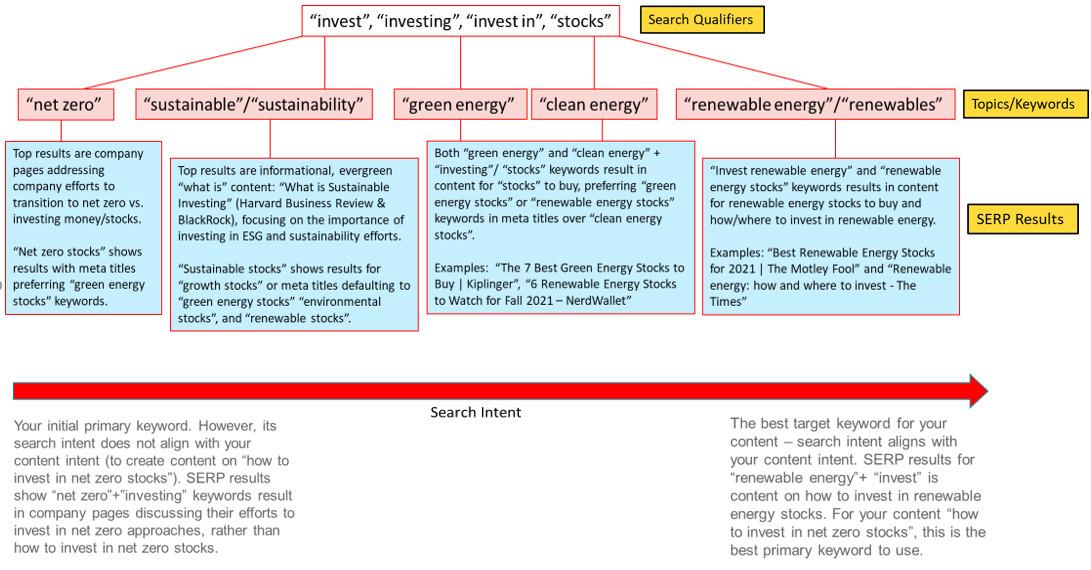
You can now start mapping out a spectrum of search intent to track which keywords and search intents are best and closest to your content goals and which are furthest away.
This diagram shows one way to map out keywords, their search qualifiers, and SERP results to determine their search intents. In this example for “net zero,” you can see the progression of search intents on a spectrum, from “net zero” and “sustainability” keywords (which contain search intents furthest away from your content goal) to “green energy” and “renewable energy” keywords (which contain search intents closest to your content goal).
Tip: refer to your spectrum of mapped-out search intents to create content for other keywords your current content goals are not targeting.
Optimizing Content for Search Intent
Once you have fact-checked the search intent of your primary keyword, you can begin creating or optimizing your content to that primary keyword and its search intent.
Again, search engines are much more intuitive when it comes to understanding a keyword or topic and they consider the context of a keyword.
This includes optimizing on-page and off-page factors such as:
- Headings: H1s and H2s. H2s or sub-headings offer opportunities to address top and relevant topics your content should address to best meet target audience needs.
- Links: A mix of internal and external links to relevant pages you want search engines to understand are associated with your content. Internal links also offer the navigational benefit of moving your user through your site to other relevant topics or to a call-to-action.
- Anchor Text: Think of anchor text like street signs, informing you of your route and destination – search engines use anchor text to understand how content is connected and why they are referencing and associating with each other. This helps illustrates to search engines a holistic understanding of your topic.
- Images: Like the example for the keyword “race” used earlier in the article, using images not only creates engaging content for the reader but offers opportunities to feed to search engines more hints to better understand your content – i.e., including an image of a marathon runner on your page about “race day” eliminates confusion for search engines that the content is about marathon races not “ethnicity.
- Image Alt Text: Finally, image alt text offers opportunities to include descriptive and keyword-rich text about the content on your page and helps search engines index the page correctly for searches on Google Image.
While there are many factors determining the performance, rank, and authority of content on the web, understanding how to discover the search intent of your keywords and topics, and how to create or optimize your content to those search intents, will put you on the path to creating relevant, useful, and authoritative content for your readers.

